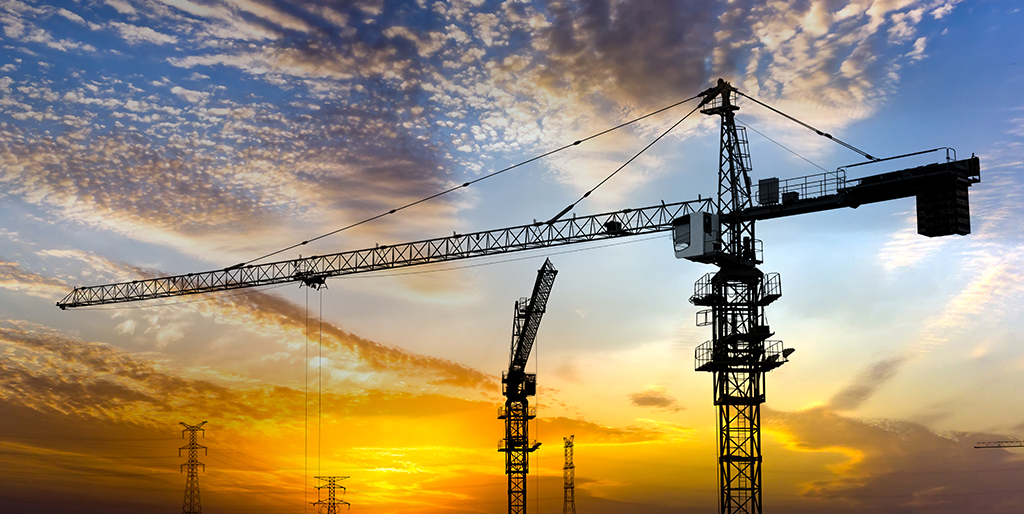4-Minute Read
The current market conditions for acquiring cranes have been marked by rising interest rates and tightening credit standards. According to a report, the global crane market size is expected to reach $54.9 billion by 2025, but the industry faces challenges due to volatile commodity prices, fluctuating foreign exchange rates, and geopolitical instability.
Related: How to Move Up with Working Capital Loans in a Down Economy
Despite these challenges, some CEOs are charging ahead with crane acquisitions, following the advice of legendary investor Warren Buffet, who once said, “Be fearful when others are greedy and greedy when others are fearful.”

Are you considering crane acquisition? Don’t be delayed by current market conditions. Let’s explore the pros and cons of delaying a crane acquisition, as well as strategies for securing financing in a tightening credit market. By the end of this article, you may feel more confident about acquiring a crane (or fleet) in today’s economy.
Should I Delay My Crane Acquisition?
It’s easy to see how one may be hesitant to acquire a crane. Rising interest rates can impact your company’s bottom line and cash flow. However, there are several financing options that CFOs can consider to navigate through the rate increase.

For instance, fixed-rate financing provides more certainty in terms of interest expenses, which can help CFOs budget accordingly. Additionally, leasing options can offer tax benefits and flexibility in terms of equipment upgrades, while shorter-term loans can result in lower overall interest expenses.
EFFI’s client-centered solutions allow our customers to make the best decision for their businesses year after year. It is crucial to work with a lender that emphasizes collaboration for the growth of the company. Put a meeting on our calendar to discuss how EFFI finance can help make your crane acquisition profitable in more ways than one.
It’s important to note that despite rising interest rates, companies can still secure financing at a reasonable cost.
According to data from the Rates Index, the Like Term Swap Rate for equipment financing has been increasing since 2017, but financing rates are still relatively low compared to historical averages. For instance, the average nominal interest rate for equipment financing in January 2023 was 5.5%, which is slightly higher than the average rate in 2022 but still lower than the historical average.

While rising interest rates may make CFOs hesitant to invest in new cranes, there are financing options available to help navigate through the rate increase. By considering fixed-rate financing, leasing options, and shorter-term loans, CFOs can acquire equipment at a reasonable cost despite the current market conditions.
EFFI’s Menu of Options
EFFI Finance provides a range of financing options, including sales leaseback, equipment lines, and consolidation loans.
- Sales leaseback involves selling existing equipment to a lender and then leasing it back from them. This option can provide companies with access to cash to finance the acquisition of new cranes while still being able to use the sold equipment. The downside of this option is that it can be more expensive in the long run compared to other financing options.
- Equipment lines involve establishing a line of credit for the purchase of equipment. This option can provide companies with more flexibility in terms of equipment upgrades and can be less expensive than sales leaseback in the long run. However, it may require more documentation and may have higher interest rates.
- Consolidation loans involve combining multiple loans into a single loan, resulting in a lower interest rate and potentially lower monthly payments. This option can simplify a company’s debt obligations and improve cash flow. However, it may not be available for all companies.
When choosing the best option for their business, CFOs should consider factors such as their cash flow, the cost of financing, the term of the loan, and the flexibility of the financing option. They should also consider working with a reputable equipment financing firm that can provide guidance and support throughout the financing process.
In conclusion, despite the current market conditions, CEOs and CFOs should consider taking action and securing financing for their crane acquisitions to drive growth and revenue for their business.
As Warren Buffet once said, “Price is what you pay, value is what you get.”
By investing in valuable assets like cranes, companies can position themselves for success in the long run.


